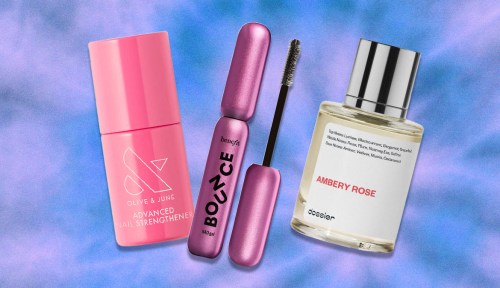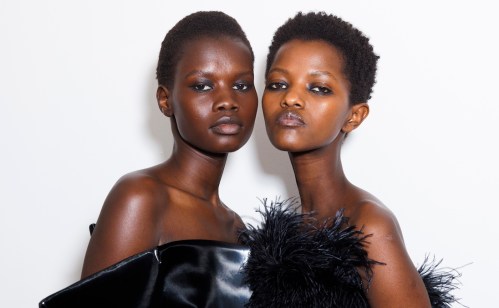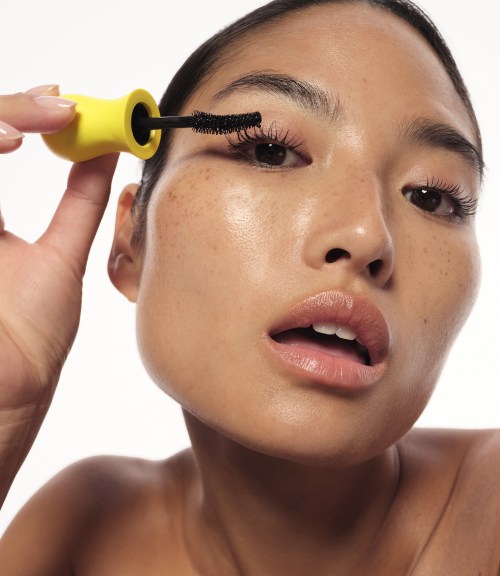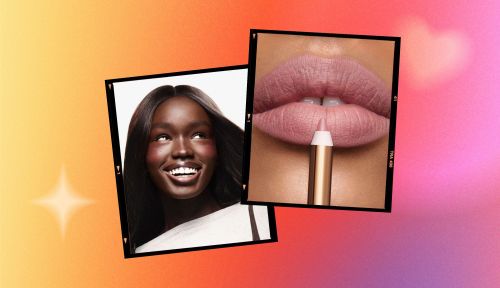You know that feeling when you catch a glimpse of yourself halfway through the day in either a rearview mirror or that office bathroom and realize that a) your foundation wasn’t properly blended in or b) your face is a completely different shade than your neck? Same! There’s also the fun scenario when you notice streaks that didn’t seem to be there when you applied your foundation in the morning. Le sigh—I don’t know what it is about foundation, but it seems to come with a slew of complications.
But that’s apparently because, well, I’ve been using it wrong. If you’re a pro makeup kween, chances are you don’t even know what I’m talking about because your foundation application is always f-l-a-w-l-e-s-s. But if you’re like me… what’s up?—we need some assistance. So I tapped some professional makeup artists on the most common foundation mistakes that they see, along with how to fix ’em. Keep scrolling for the intel.
1. Too much coverage: Foundation can get the reputation of being cake-y, but it shouldn’t. “I can’t tell you how many people think they need full-coverage foundation from ear to ear, when they really just have some redness or a few blemishes to cover up,” says Merrady Wickes, makeup artist and head of content and education at The Detox Market. To make things look more natural, she recommends wearing a light to medium coverage foundation that’s as sheer as possible, then building it up where you need it more. “Then just use a great concealer for the bits that need extra help,” she says.
2. Skip setting powder: I used to think setting powder was completely unnecessary, but it can actually be really useful. “Powder has such a bad reputation, but no makeup artist would ever skip this step,” says Wickes. “Use a very small blush brush or a very large eyeshadow brush to dust powder under the eyes—pat out creases first—and over the T-zone for foundation that lasts all day and doesn’t settle into fine lines or pores.” If you prefer a more dewy look, spritz on a facial mist afterwards.
3. Choosing the wrong shade: It’s an obvious one, yet it’s still such an easy mistake to make. Actually, Gabriel De Santino, creator of Gabriel Cosmetics and makeup artist, says it’s the absolute most common mistake, since people often choose shades based on what color they think their skin is. “Always try a sample before you buy a product,’ he says. “Test it on several areas of your face if possible. If you can’t find the perfect shade, or you bought the wrong one, mix it with another to create a match.”
4. Wearing the wrong moisturizer: Foundation may be the foundation of your makeup look, but moisturizer is the foundation of your foundation. “Because foundations are so skin-care packed these days, you really need to think of foundation as another skin-care step,” says Wickes, who points out that if you’re rocking several layers of skin care underneath, you may find everything sliding around if you’re trying to apply an emollient foundation. “Conversely, if you wear just a light gel moisturizer and a powder foundation, you may wonder why your skin looks like the Sahara,” she says. So, pro tip: Take into consideration your skin type, the climate, and the textures of your skin care and makeup to make sure it’s all playing nicely together.
5. Ignoring your skin type: It’s also key to make sure your foundation is right for your skin type. If you’re applying an oily, liquid foundation on oily skin, it’s going to melt off or make your skin angry. “Depending on whether your skin falls into the dry, oily, mature, or combination categories, you’ll need a different type of foundation,” says De Santino. “If your skin tends to get greasy, steer clear of oil-based formulas—and if your skin tends to dry out, avoid matte finishes that could give you a cake-y finish.”
If you’re on the market for a more breathable cover-up, try these light-as-a-feather foundations. Or you could always use a tinted moisturizer with SPF for coverage.
Sign Up for Our Daily Newsletter
Get all the latest in wellness, trends, food, fitness, beauty, and more delivered right to your inbox.
Got it, you've been added to our email list.











